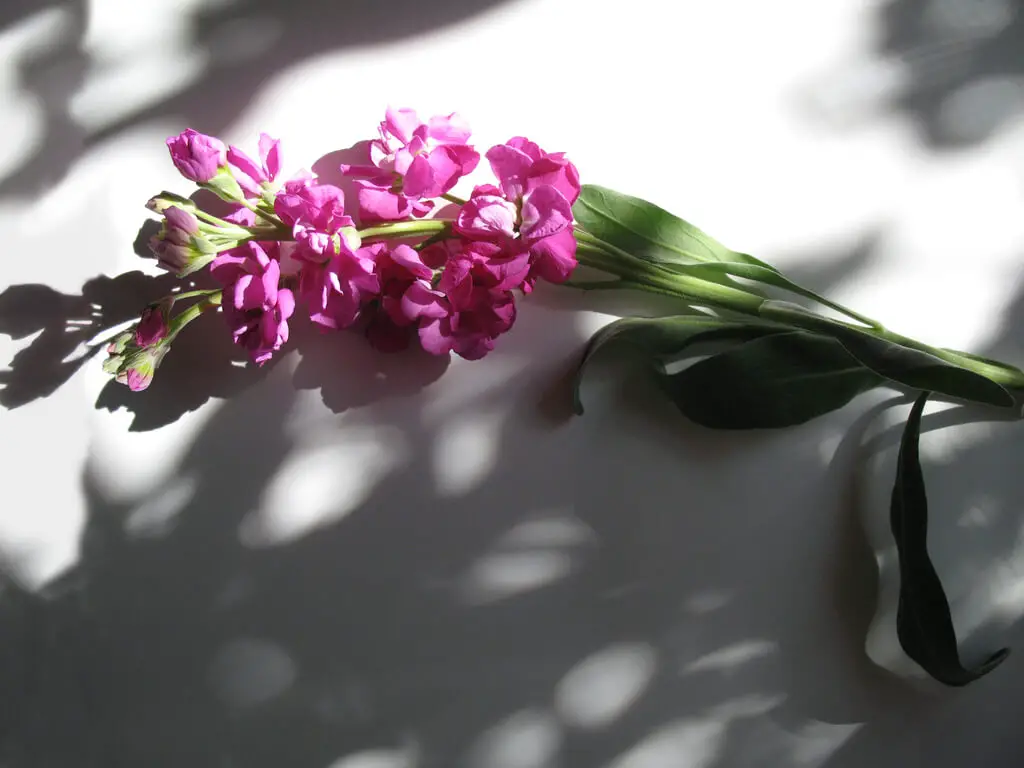How to Grow Matthiola Incana
Matthiola incana also has other names such as hoary stock and tenweeks stock. These are flowering plant species from the genus Matthiola. These garden flowers bloom in different colors. They have a wonderful scent and are most widely used in floristry. You can find these species in cultural texts at least since the 16th century.
This article focuses on Matthiola incana, its propagation, growing, caring, varieties, and uses.
Matthiola incana is one of the most popular perfume plants in the world. Its scent is incredibly pleasant to smell with a sweet and spicy odor. Generally, Stocks (Matthiola incana) are sturdy and hardy plants. So, you can either grow them in containers or plant them directly in your garden beds.
Table of Contents
Description of Matthiola Incana Plants
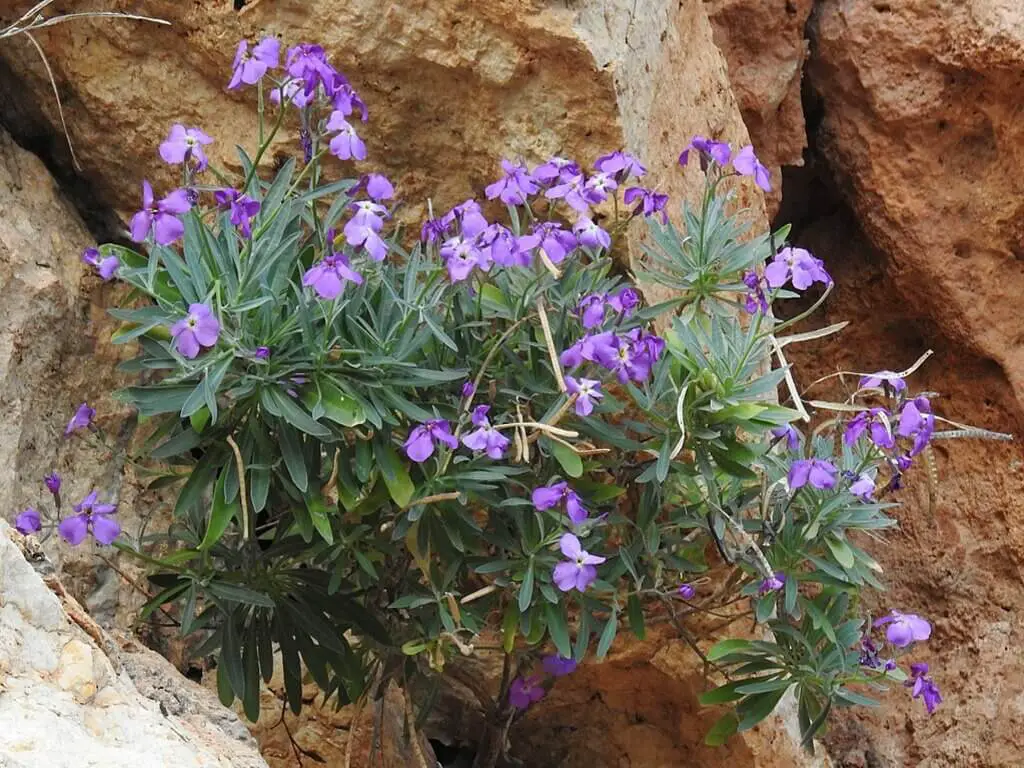
Photo by Robert Flogaus-Faust (Wikimedia Commons) (CC BY 4.0)
Matthiola incana can grow to a height of 20 to 28 centimeters. Its base is usually thick and woody. It has multiple foliar scars and originating branches. These plants usually appear starry with whitish hairs.
Normally, the stocks have ash-colored leaves with rounded edges (with wavy margins). The leaves are also lanceolate, slightly sinuate, and attenuated on the petioles. They normally sprout out in rosette’ fashion.
The fragrant flowers bloom in different colors like blue, purple, pink, red, white, and cream yellow. Normally, the sepals measure 11-14 mm in length and the petals measure 25-30 mm in length. A 10-20 mm stalk supports the flower.
Distribution
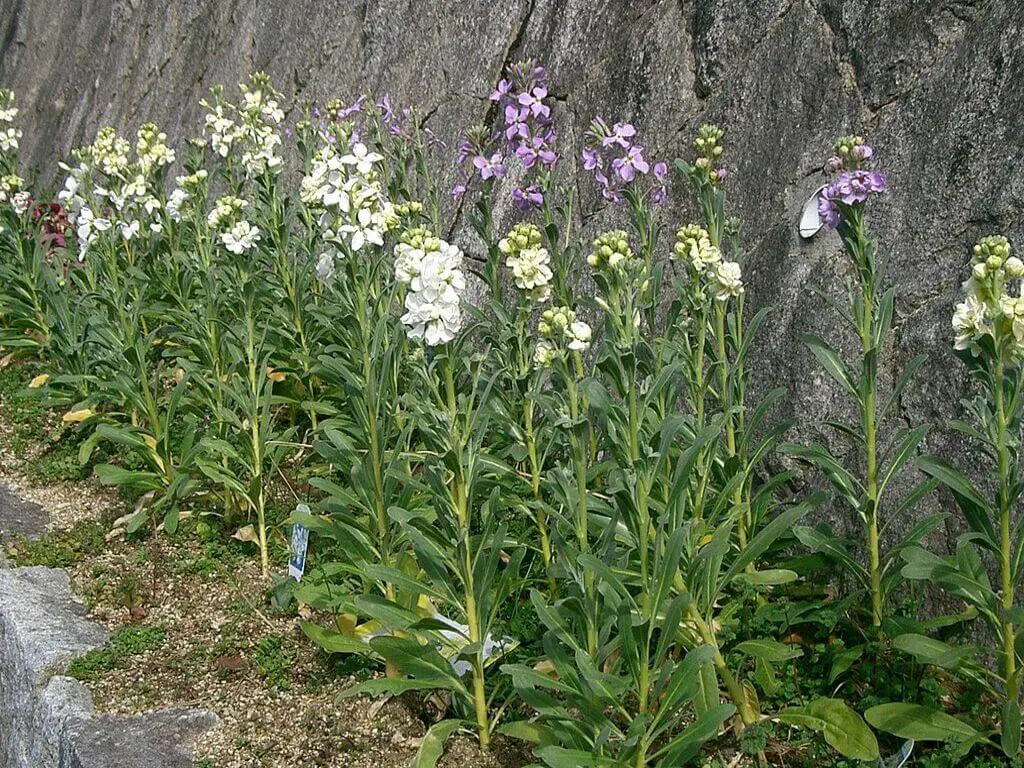
Photo by GFDL (Wikimedia Commons) (CC BY-SA 3.0)
Generally, Matthiola incana is native to the southern part of the European world. You can find them growing in abundance from the Balearics to old Yugoslavia. However, these plants have naturalized themselves in the west Mediterranean region too.
Normally, these plants prefer to grow in calcareous soils. You can find them commonly growing on cliffs facing the sea or on old, deserted walls. However, they have neutralized themselves on hinterlands as high as 600 meters.
Characteristics of Matthiola Incana Plants
Generally, Matthiola incana blooms and seeds from its second year of planting. Hence, it is a biennial plant. However, it can be a perennial, biennial, or annual depending on the region and environment.
These plants can survive only the initial few touches of frost. There is no guarantee that these plants can survive the frosts continually, as some people believe. So, in colder areas, you can plant them as annuals.
Normally, in warm areas, they can survive many years with strong wooden bases. However, if the temperature exceeds 60 degrees Fahrenheit, the blooming decreases or stops fully.
Varieties of Matthiola Incana
There are more than 60 varieties of known cultivars available in the market. They mostly differ from each other in color and size. Some of them are briefed below:
‘Legacy’ Stock
Generally, the legacy series of cultivars grow about a couple of feet tall. They usually form gorgeous double flowers on single stems. These flowers have different colors. They also emit their signature smell, that is spicy yet sweet. This smell is the reason for the popularity of stock flowers.
‘White Goddess’ Stock
The white goddess variety is one of the most popular varieties among gardeners. It has large beautiful flowers that are visually appealing. They usually form double blooms on single stems. The flowers are usually pure white in color with yellowish-green centers.
‘Starlight Sensation’ Stock
The starlight sensation stock grows 18 inches tall. You cannot exactly predict, the shade of the future blooms at the earlier stages. The blooms may have different colours. But you can expect single, large and fragrant flowers sprouting from stalks. Normally, the blooming season starts from spring and extends to a few weeks in summer.
Cinderella’ Stock
Generally, the Cinderella stock is a dwarf variety of the traditional Matthiola incana. It grows almost 10 inches tall. Even in this small, dwarf nature, it produces double blooms in all available major colors. The scent of these flowers is identical to the traditional variety.
Due to its compactness, it is a perfect fit for containers positioned at nose height. They can also decorate the borders of your garden beds in a unique fashion due to their compact nature.
Matthiola longipetala
Matthiola longipetala opens its blooms during nocturnal blooming hours. This unique character is the reason behind its popularity among the masses. However, its flowers look moderate (lackluster) compared to other varieties.
During the late evening hours, it opens its bloom petals to emit powerful fragrance. This fragrance is so sweet and attractive, that even busy walkers stop a while to enjoy the odor.
Propagation
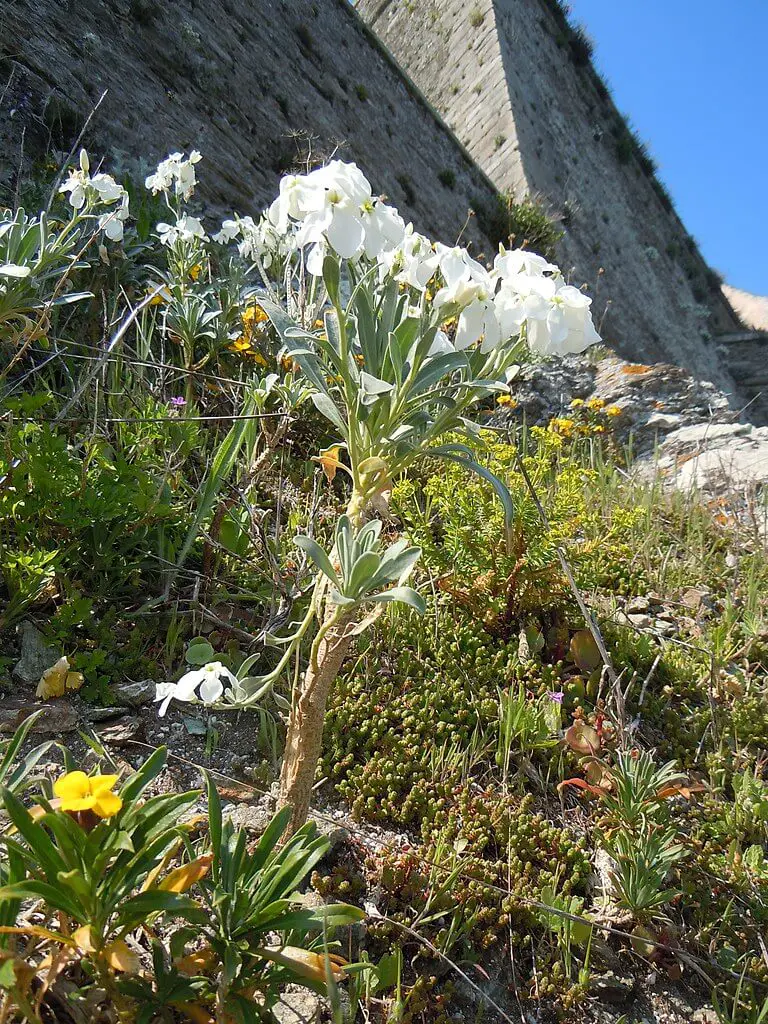
Photo by Patrice78500 (Wikimedia Commons) (CC BY-SA 4.0)
Matthiola incan prefers to grow in areas with full sunlight, it can tolerate partial shades too. Make sure to plant them in mild alkaline soil, that drains well. Fertilize the soil at least once every month after planting.
You can grow Matthiola incan from seeds or seedlings. However, seedlings have a higher success rate than seeds.
From Seedlings
First, dig a hole large enough to accommodate the seedlings. Make sure the hole is deep enough (approximately two inches) so that the bottom-most portion of the crown is just below the surface level.
Then, place the seedlings carefully in the holes in the upright position and cover the holes with soil. Also, make sure the passage between the plants is wide enough to facilitate adequate airflow (at least 15 centimeters). This is essential to prevent fungal diseases.
From Seeds
Fill the containers with rich, well-draining soil amended with potting mix. Sow the purchased seeds at least half an inch deep. Water the arrangement almost every day.
When you see young plants sprouting out with two or more sets of true leaves, transplant them into your gardens. Make sure to transplant after the last frost date. Also, make sure the passage between the plants is wide enough to facilitate adequate airflow. This essential to prevent fungal diseases.
Caring Matthiola Incana
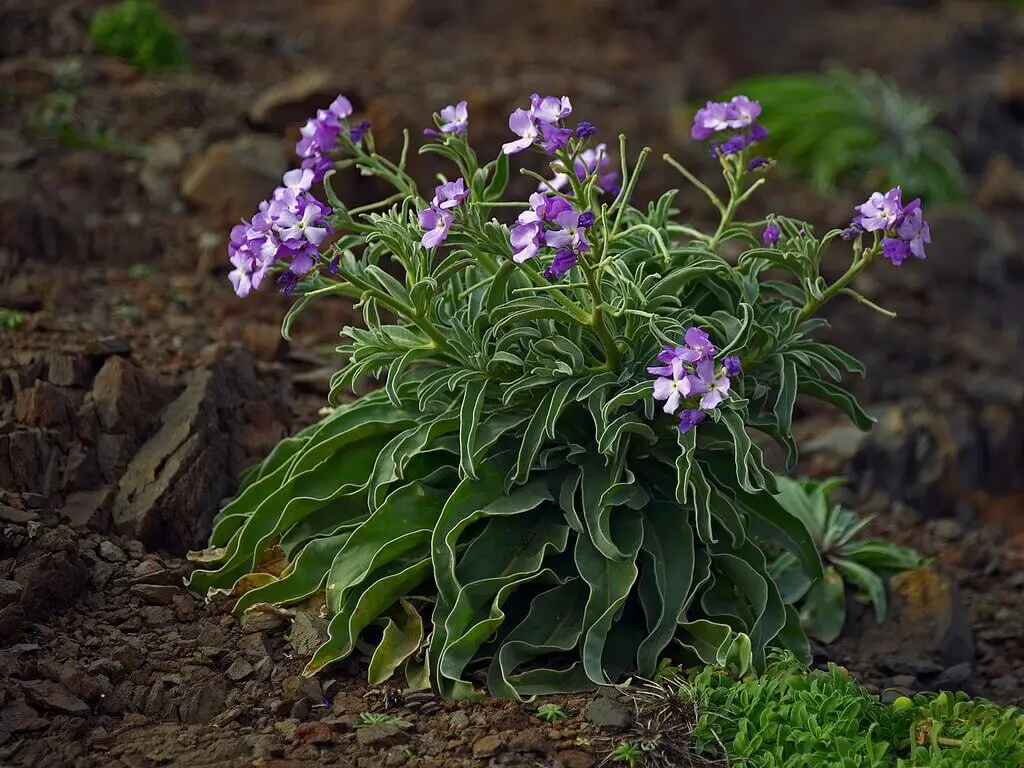
Photo by Ввласенко (Wikimedia Commons) (CC BY-SA 3.0)
Generally, once Matthiola incana establishes itself, it seldom needs caring. Natural rainfall is adequate as a watering resource. Still, if you encounter droughts or long dry periods, water the plant occasionally.
Fertilize the soil at least once a month, specifically if the soil quality is poor. This encourages the plant’s healthy growth.
Remove the dead flower heads with good pruning shears. This helps fresh growth and elongates the blossoming period to the maximum extent.
Pests and Diseases
Generally, Matthiola incana is a hardy plant. Pests and diseases do not bother these plants. So, there is no need for worrying about this subject. In rare cases, common plant pests and bugs, rabbits, deer Etc, may bother it. You can treat them with pesticide or appropriate repellents easily.
If you find these plants affected with common plant fungal disease, you can treat them with good quality fungicide. These scenarios are rare. However, it is advisable to have sufficient airpath around plants to prevent these fungal diseases.
Always use proper Garden Gear while performing and garden-related activities.
Companion Plants for Matthiola Incana
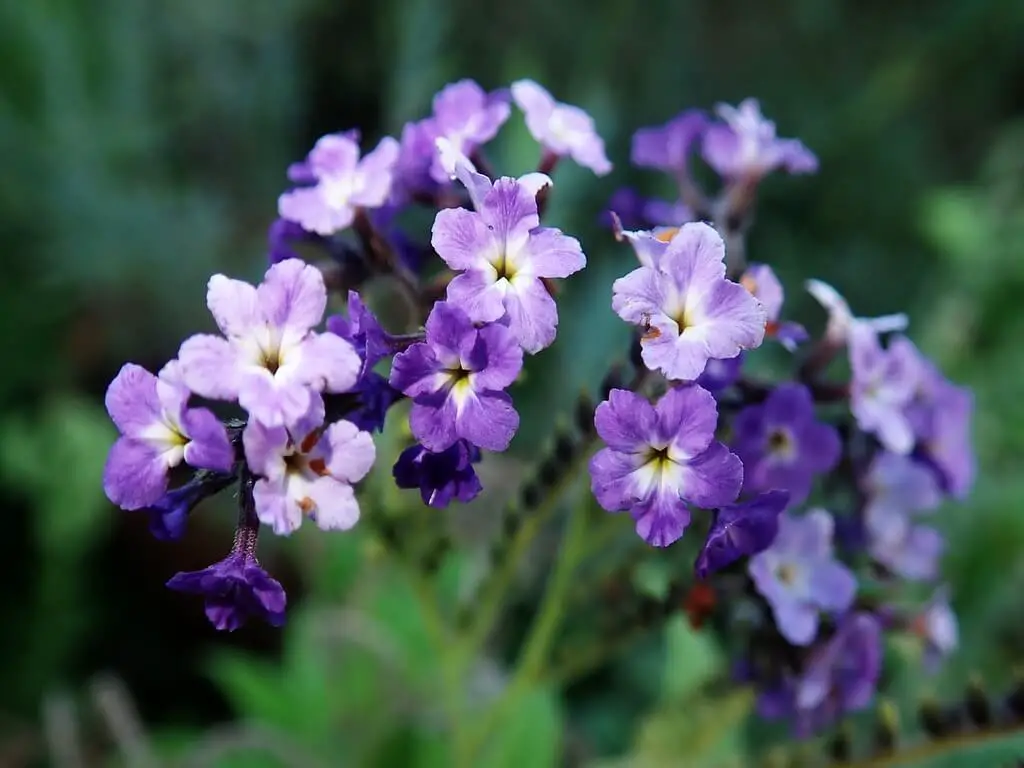
You can pair Matthiola incana with phlox and heliotrope. These trios will partner perfectly in the garden, indoors, and also as cut flowers for events.

If you plant Nemesia with stock flowers, this duo will form a lovely pair of flowers throughout the spring season. In summer, the stock flowers stop blooming. However, Nemesia continues blooming and equates the loss of blooming in stocks.
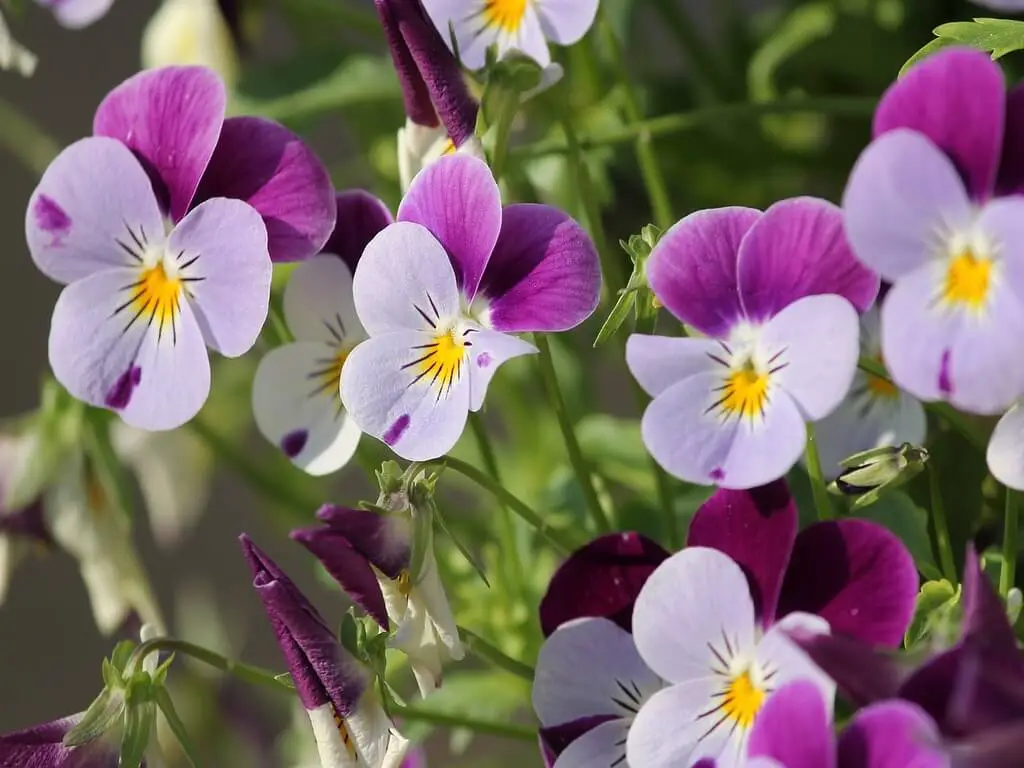
If you want a duo pair that blooms together in the spring and fades together in summer, try growing pansies with stock flowers. They live and dormant almost similarly. After the blooming season, you can replace them with other warm-season annual plants like petunias or marigolds.

Also, you have the option of planting sweet pea flowering plants with stock. These sweet fragrance mixtures are a great combination for any occasion. Like stock, sweet pea plants bloom different colors of flowers. This similarity, makes them a great pair in bouquets as well, apart from gardens.
Uses of Matthiola Incana Plants
Matthiola incana caters as ornamental plants, aromatic plants, and also as cut flowers. Throughout the blooming season, the stocks sprout lovely flowers with wonderful sweet fragrance. Most gardens plant these stocks, just for this very reason.
Indoor Bouquets
Matthiola incana flowers provide natural looks and suitable for indoor decorates. These flowers can retain its form, color, and fragrance, for prolonged periods, even after their removal from live plants. They just require minimal caring to maintain the stature as prescribed below:
First, remove the leaves from the bottom portion of the stalks, that are going to be hidden in the vase. This arrangement helps the stalk to spend its precious energy to keep the flowers alive for longer periods. Otherwise, it will divert some of its energy to keep the leaves alive and fresh as long as possible.
Fill the vase with two-third of water, mixed with cut flower fertilizers. Then, place the flower stacks in the vase. Place this arrangement in the space where you want to decorate (indoors).
Make sure to replace the water mixture in the vase every day. Also, snip the bottom portion of the stalk every day, before placing it in the replaced water mixture.
Repeat the procedure every day to maximize the lifetime of the flowers naturally.
Similar Plants
How to Grow Liatris Spicata (Blazing Star Liatris) Plants in Gardens
How to Grow Ivy Geranium Plants

